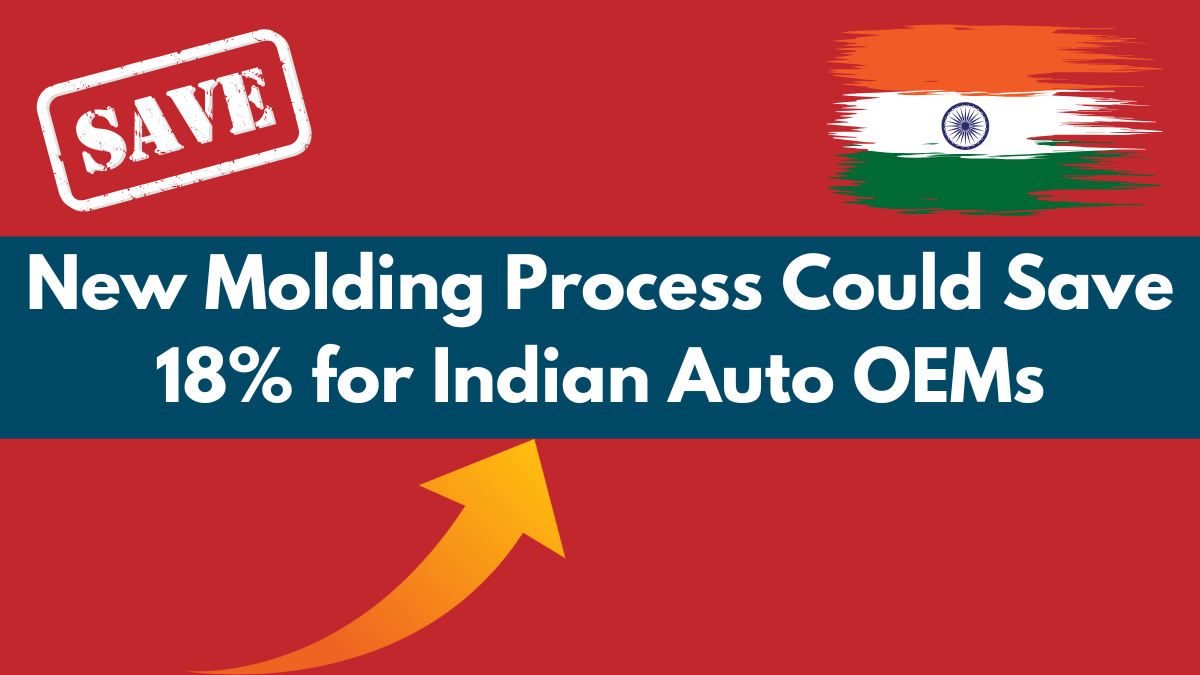The Indian automotive industry is undergoing a manufacturing transformation, with new breakthroughs in Automotive Injection Molding helping manufacturers slash costs and improve production efficiency. In July 2025, a consortium of Tier-1 suppliers and tooling companies revealed a new high-speed molding technique that promises to reduce component production costs by up to 18%—a game-changing development for Indian OEMs. At the heart of this innovation is a shift toward cost-effective parts using optimized mold flow, thinner walls, and lower cycle times.
This comes at a time when carmakers are battling input cost inflation, tightening emission norms, and consumer demands for affordability. The new molding process not only brings down material usage but also enhances part strength and reduces post-processing.

How the New Injection Molding Process Works
This next-gen Automotive Injection Molding technology involves advanced hot-runner molds, precision gating, and in-mold pressure balancing. Unlike traditional systems that use excess polymer material and slow cooling methods, the updated process uses flow simulation data and AI-based mold sensors to achieve faster, more uniform filling.
Key aspects of the process:
-
Reduced shot weight by up to 12% per part
-
Lower mold cycle time by 22–28%
-
Automated part ejection and cooling
-
Uniform pressure zones to reduce warping and shrinkage
-
Use of recyclable polymers for cost-effective parts
This means that for every 100,000 molded parts, manufacturers can save substantial raw material and energy, while also improving component consistency and fit.
Cost Savings and Production Impact for Indian OEMs
The direct cost benefit of the new Automotive Injection Molding process is particularly relevant to mass-market carmakers and suppliers producing door trims, dashboards, bumpers, clips, and under-the-hood components.
| Component Type | Traditional Cost per Unit | New Cost per Unit | Cost Savings (%) |
|---|---|---|---|
| Door Trim Panels | ₹420 | ₹345 | 17.9% |
| Dashboard Inserts | ₹310 | ₹255 | 17.7% |
| Bumper Clips | ₹55 | ₹45 | 18.2% |
| AC Vent Frames | ₹70 | ₹58 | 17.1% |
| Engine Cover Brackets | ₹90 | ₹74 | 17.8% |
These reductions are possible due to material efficiency, reduced energy use, and fewer rejections in the production line. When scaled across millions of vehicles, the savings could redefine margin structures for OEMs, especially in budget and EV segments.
Environmental and Supply Chain Advantages
The switch to cost-effective parts through optimized molding also aligns with India’s push for greener manufacturing. The new technique uses high-flow biodegradable polymers or low-VOC thermoplastics, reducing carbon emissions at the source.
Advantages for sustainability:
-
Less polymer waste during mold filling
-
Lower electricity consumption due to shorter cycles
-
Easy integration with recycled content in molds
-
Reduced transport costs with lighter components
In addition, Indian tooling suppliers are now producing local high-precision molds, cutting the industry’s dependence on expensive European imports and shortening supply chain timelines.
Industry Response and Upcoming Adoption
Major automotive suppliers like Uno Minda, Lumax, and JBM Auto have already begun pilot projects using the new Automotive Injection Molding method. OEMs such as Tata Motors, Hyundai India, and Mahindra are expected to roll out these cost-effective changes in their 2026 model lines.
Rollout timeline:
-
Q3 2025: Pilot production in vendor clusters
-
Q4 2025: Commercial-scale rollout in three OEM plants
-
Q1 2026: Adoption across select electric vehicle production lines
-
Q2 2026: National-level mold supply chain standardization
Industry analysts estimate that with full-scale adoption, India’s auto component exports could become even more competitive due to high-volume, cost-effective parts production.
Conclusion
The evolution of Automotive Injection Molding in India marks a significant leap forward for both cost and quality. By embracing faster, smarter, and more sustainable molding techniques, Indian OEMs are not only saving up to 18% on part production but are also future-proofing their processes. As demand for affordable and green vehicles grows, this innovation positions India’s auto sector to lead in both domestic and international markets.
FAQs
What is the new automotive injection molding process?
It’s an advanced molding technique using high-speed machines and smart molds to produce lighter, stronger, and cheaper parts for vehicles.
How do cost-effective parts help OEMs?
They reduce raw material usage and manufacturing time, resulting in lower per-unit costs without compromising quality or performance.
Is this technology suitable for electric vehicles?
Yes, it’s ideal for EVs as it helps make lightweight parts that improve energy efficiency and vehicle range.
Are the materials used in this process recyclable?
Many suppliers are using recyclable or biodegradable thermoplastics, making the process more environmentally friendly.
When will this molding process be widely available?
Full-scale production using the new system is expected by early 2026 across multiple Indian OEMs.
Click here to know more